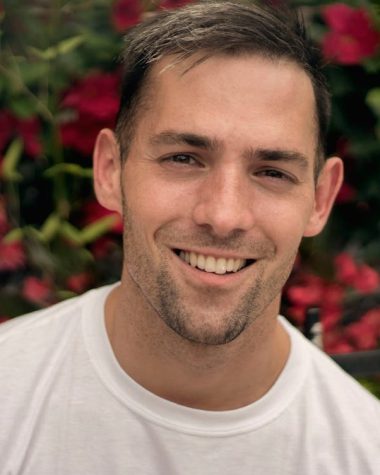BlackRock Inc. stands as a financial giant that quietly shapes the global economy. Founded in 1988 as a risk management firm, it has grown into the world’s largest asset manager. With $10 trillion under its control, BlackRock oversees a quarter of the world’s money in circulation.
This powerhouse company wields enormous influence across industries and markets. Its reach extends far beyond typical investment firms, affecting everything from major banks to various sectors of the economy. Despite its massive scale and impact, BlackRock remains relatively unknown to the general public, operating behind the scenes of global finance.
A Giant in Media Control
BlackRock and Vanguard stand as two of the largest passive fund management firms globally. These companies hold significant stakes in major media corporations, giving them substantial influence over the industry.
Their reach extends to some of the biggest names in media:
- Fox: 18% ownership
- CBS: 16% ownership
- Comcast (NBC, MSNBC, CNBC, Sky): 13% ownership
- CNN: 12% ownership
- Disney: 12% ownership
This level of ownership means BlackRock and Vanguard have a say in over 90% of the U.S. media landscape. Many media giants that seem to be rivals are actually partly owned by the same firms.
The impact of this ownership structure is far-reaching. While the exact level of editorial control is not clear, these firms have the potential to shape global narratives and impact world events through their media holdings.
Vanguard is BlackRock’s largest shareholder, creating a complex web of ownership. Vanguard’s own ownership structure is less clear, but links have been made to some of the world’s wealthiest families.
This concentration of media ownership raises questions about diversity of viewpoints and the potential for conflicts of interest in news reporting and entertainment content.
BlackRock’s Digital Oracle
BlackRock’s secret weapon is a powerful trading algorithm called Aladdin. This advanced system handles over $21 trillion in assets and makes about 250,000 trades each day. Aladdin stands for Asset, Liability, Debt, and Derivative Investment Network.
Aladdin’s reach is vast:
- Controls over 50% of ETFs
- Manages 17% of the bond market
- Oversees 10% of the stock market
The system gathers data on markets, companies, and assets worldwide. It uses machine learning to make rapid trading decisions. Aladdin works faster than human reflexes.
Aladdin’s network consists of around 5,000 supercomputers. These act like a central nervous system for top investors and asset managers. Many major banks and funds now depend on Aladdin to try to beat the market.
This reliance on a single AI system raises questions about financial system stability. As more institutions use Aladdin, its influence grows. This concentration of decision-making power in one algorithm could have far-reaching effects on global markets.
Aladdin’s role in shaping financial flows is significant but often overlooked. Its actions impact economies worldwide, yet few people know of its existence or scope.
The Concentration of Financial Power
BlackRock holds a unique position in the global economy. This company manages trillions of dollars in assets, giving it significant influence over markets and corporations worldwide. Its proprietary software, Aladdin, plays a crucial role in financial decision-making for many large institutions.
The company’s size and reach raise concerns about market concentration. When BlackRock becomes a shareholder, it can boost a company’s status considerably. This power extends beyond the business world. BlackRock’s leadership can engage directly with high-level government officials and international organizations.
Such concentrated financial power carries risks. A security breach in Aladdin could potentially disrupt global markets. The system’s widespread use also gives larger players an edge, potentially putting smaller investors at a disadvantage.
BlackRock’s influence extends to steering economic trends. Along with other major asset managers, it can shape corporate behavior and market directions through its investment choices and shareholder voting power.
The Financial Giant’s Influence
BlackRock, a powerhouse in the financial world, wields enormous sway over global markets and governments. Its impact became clear during the 2008 financial crisis. The company’s risk management system, Aladdin, played a key role in helping banks and regulators navigate the turmoil.
The U.S. government turned to Aladdin for crucial decisions about Bear Stearns, a major investment bank that collapsed. This trust led to BlackRock gaining even more power. The firm helped decide how to use $2 trillion in economic stimulus funds. Much of this money went to areas where BlackRock had existing investments.
BlackRock’s reach extends beyond finance into politics. Several former executives now hold important positions in the U.S. government. These include roles in the National Economic Council and Treasury Department.
The company has also changed how investing works. In 2017, BlackRock started replacing human fund managers with computer programs. This shift reflects a broader trend in stock trading. Today, machines carry out most trades in the U.S. stock market.
BlackRock’s influence raises questions about power in the financial world:
- Who controls the world’s wealth?
- How much say should one company have in global finance?
- What are the risks of relying so heavily on computer algorithms?
As BlackRock’s power grows, these questions become more pressing. The firm’s actions affect not just investors, but entire economies and governments around the world.
AI’s Financial Dominance
AI has quietly reshaped the global economy for years. Advanced programs like Aladdin have become integral to the financial system. These AI systems manage trillions of dollars in assets and have grown so powerful they can influence entire governments. The largest asset managers rely on AI to maintain their dominance. Without these AI systems, the world’s financial markets might crumble. The AI revolution isn’t on the horizon – it’s already here, deeply embedded in our economic fabric.








